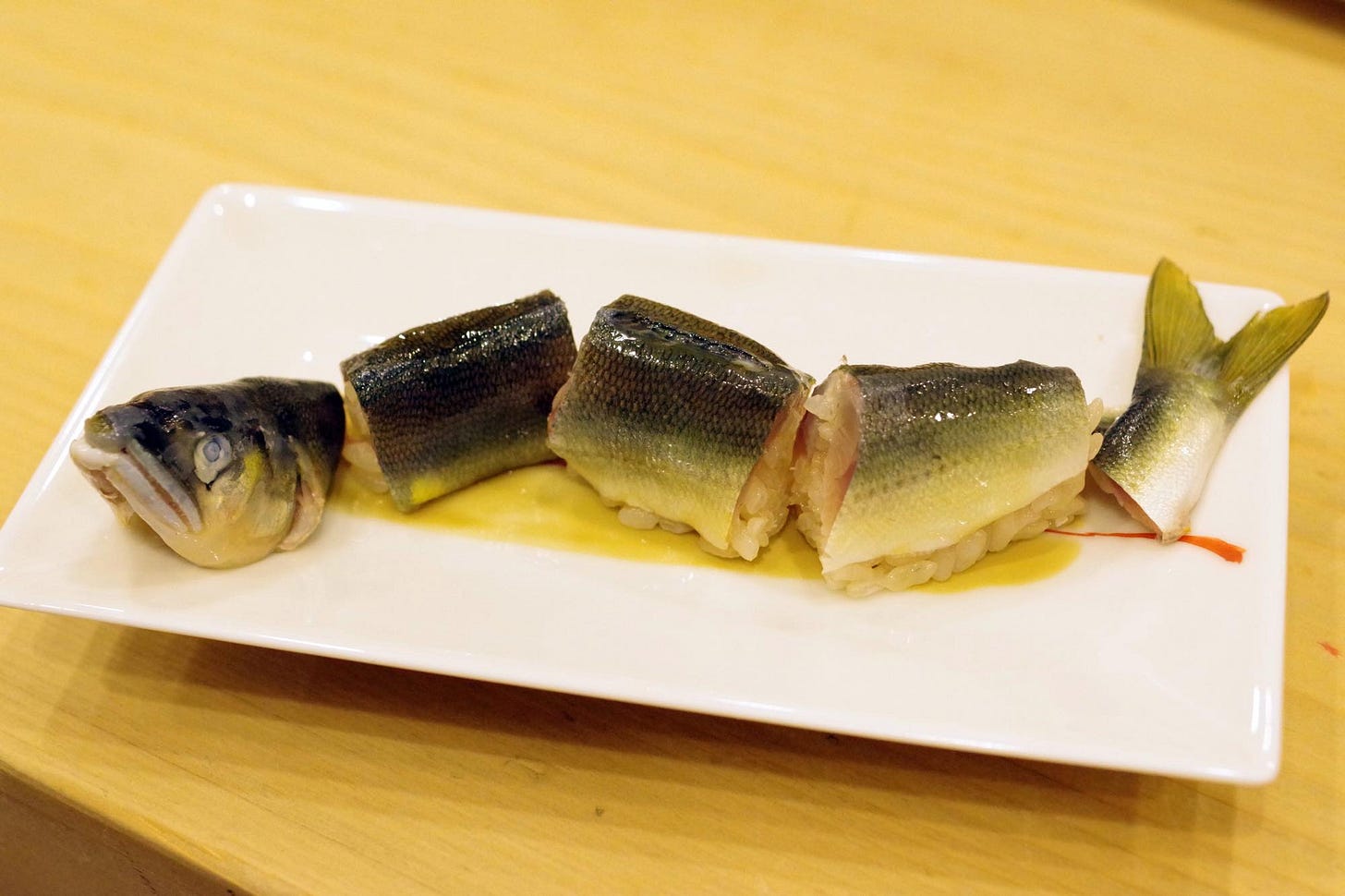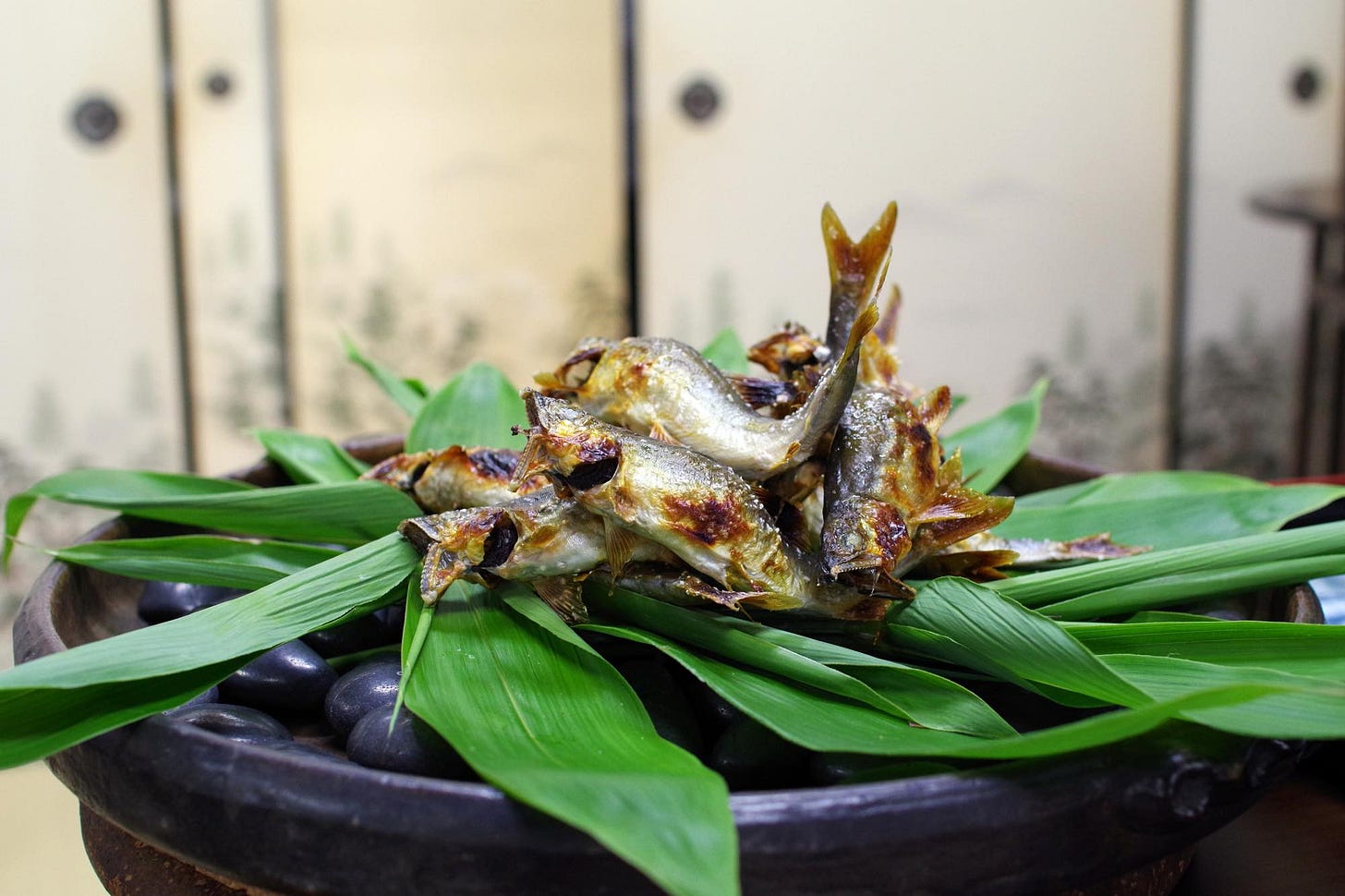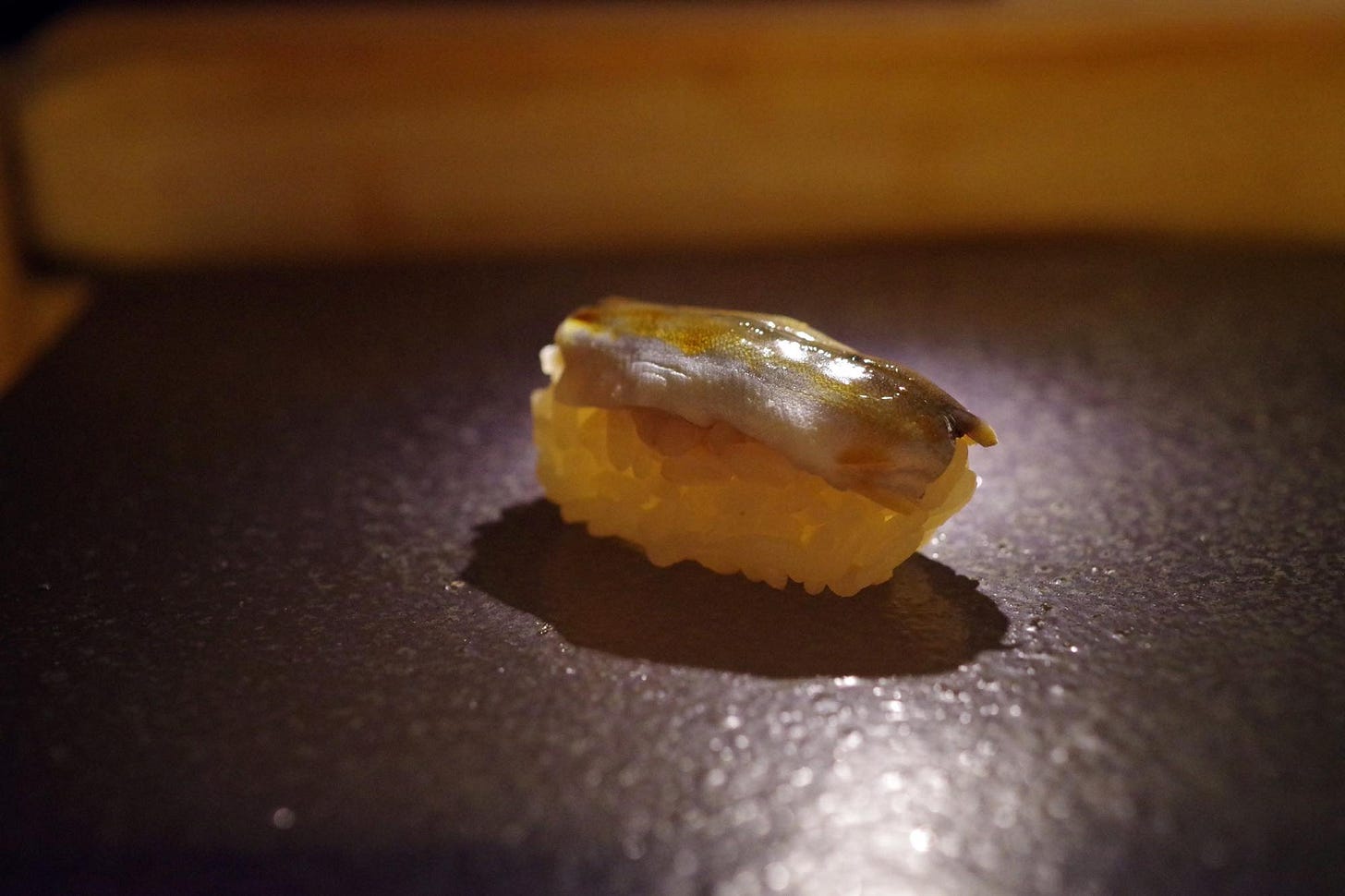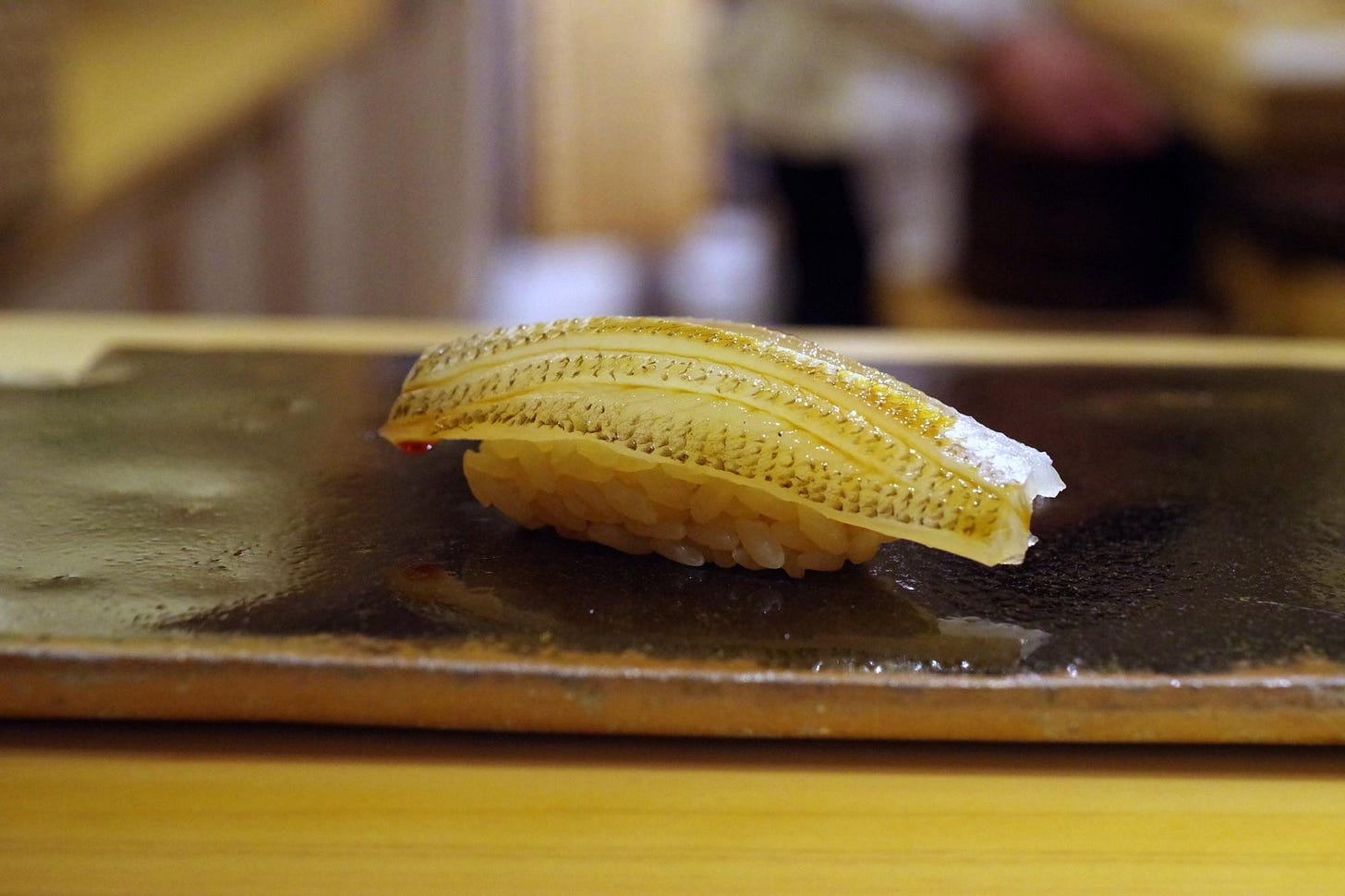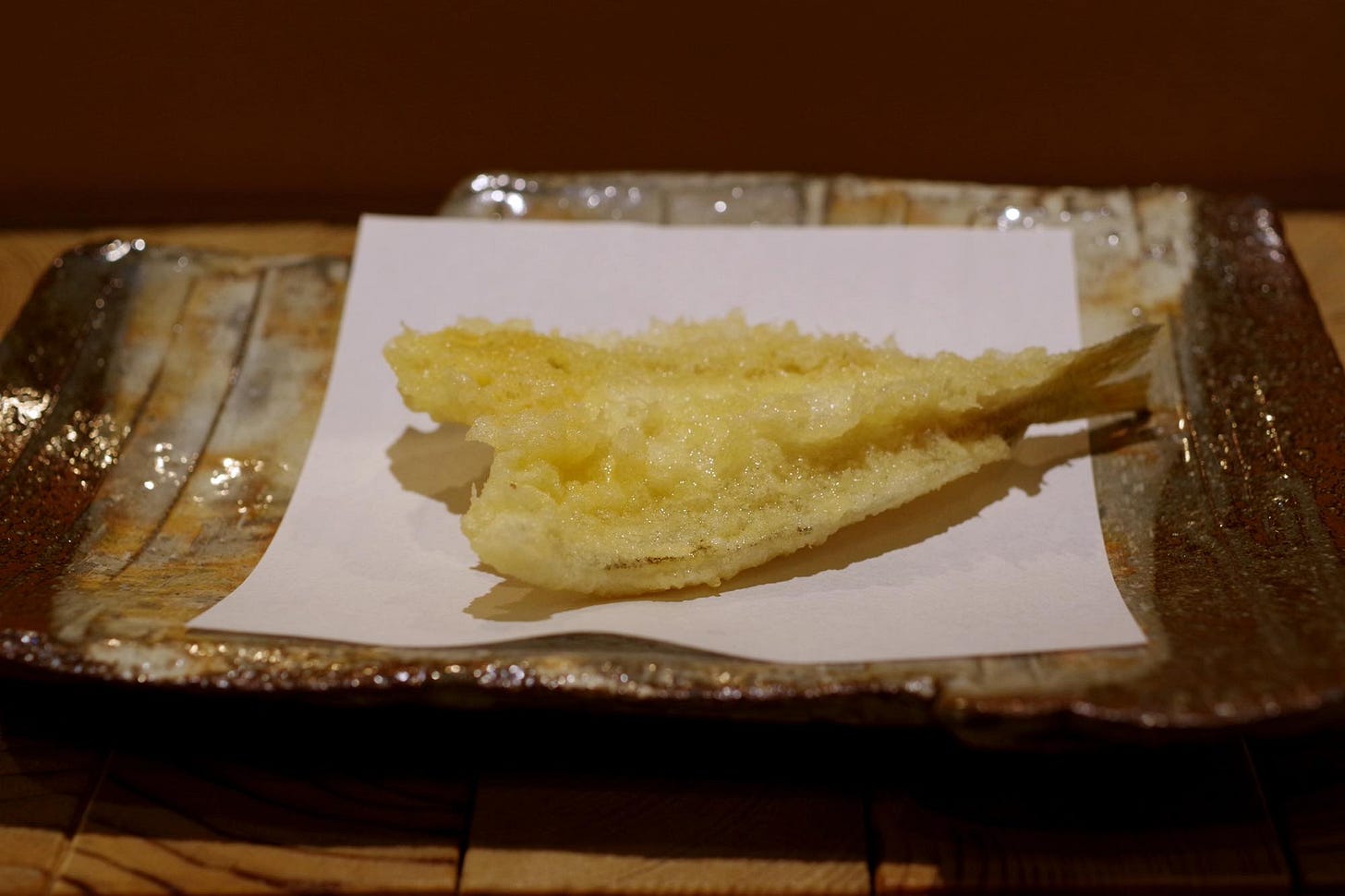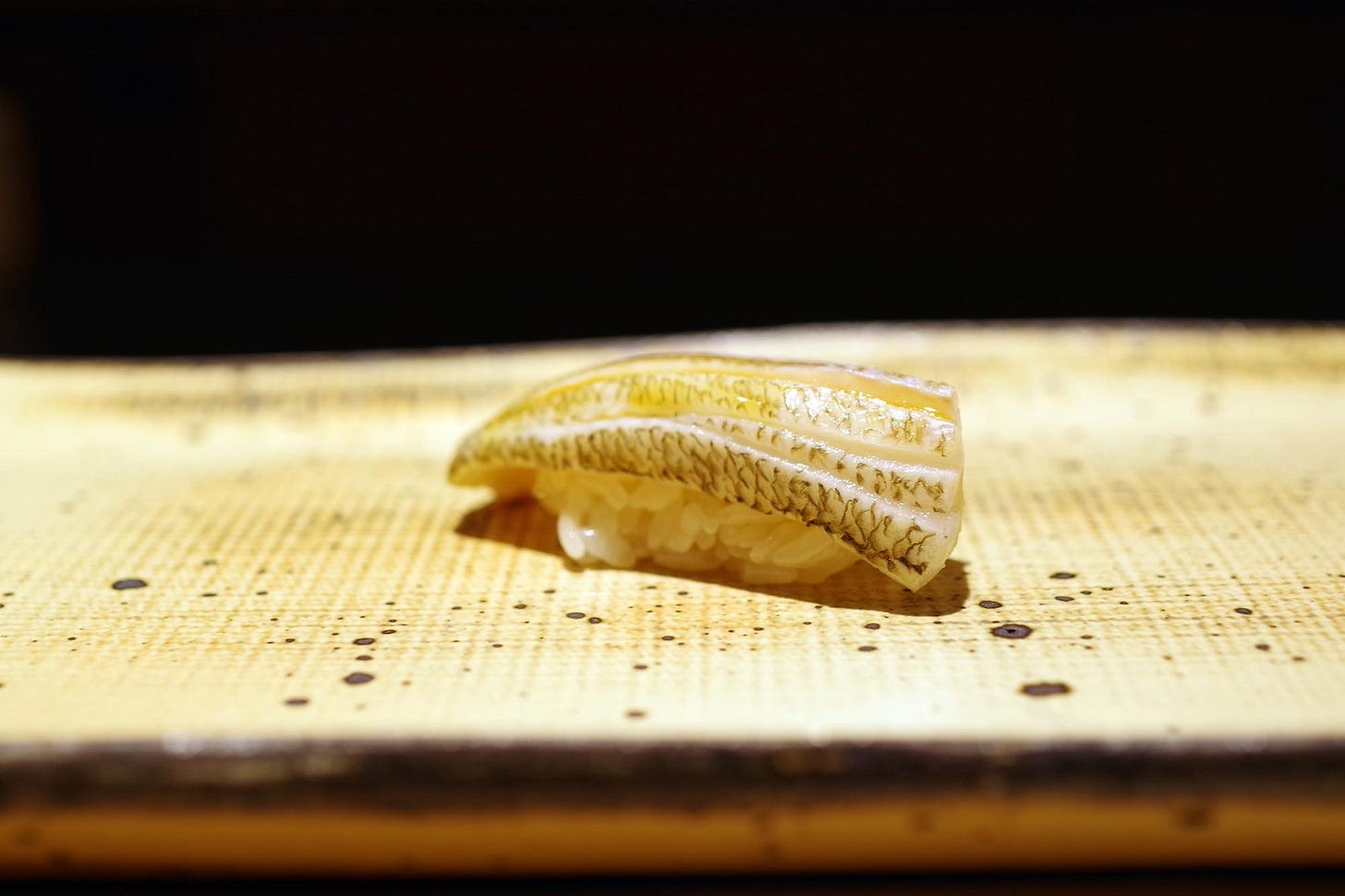In this 9th installment of "Traditional Sushi Ingredients," I will pick up the two fishes of sushi. The following are beautiful-looking hikarimono (silver-skinned fish) representative of the summer season:
Ayu (Sweetfish)
Japanese Sillago (Kisu)
Ayu (Sweetfish)
Japanese Name: Ayu
English Name: Sweetfish
Sushi Topping Category: Silver skinned fish
Main Seasonal: Summer
Ayu (sweetfish) is a freshwater fish, which makes it a bit of a challenge for those who are accustomed to the taste of saltwater fish. However, ayu has been a favorite fish in Japan since ancient times.
Its fresh cucumber-like aroma, the bitterness of its liver, and its distinct flavor make it an attractive fish unlike any other. The taste varies greatly depending on the river it inhabits and the weather conditions of the year, which may be the reason why it is so appealing to connoisseurs. The author once intensively sampled ayu from more than 10 rivers and was surprised at how much they differed from one another. I assure you that a truly delicious ayu surpasses an oily saltwater fish such as nodoguro (blackthroat seaperch). While there may be differences in tastes based on diet, I believe that fish with complex flavors and a sense of local terroir are the best. The individuality of the fish, rather than its market value, is what attracts attention.
When savoring ayu at a sushi restaurant, pay attention to these key aspects:
How the aroma is preserved and highlighted
How the liver is incorporated or omitted
The most important thing is the aroma. An ayu with its aroma muted is a third-rate product. The decision to use the liver is based on the sushi chef's sensitivity. If the liver is removed, it is important to bring out the delicate charm of the ayu. If the liver is used, it is crucial that the bitterness and aroma of the liver are in harmony with the delicate charm of the ayu without overpowering it.
Japanese Sillago (Kisu)
Japanese Name: Kisu
English Name: Japanese Sillago
Sushi Topping Category: Silver skinned fish
Main Seasonal: Summer
Kisu (Japanese Sillago) is a popular fish in Japan. It is interesting to catch kisu by fishing from a land. The first kind of sushi I ever made was kisu. I caught a large one myself in my mid-twenties, over 20 cm in length, and lightly 〆 it before eating. The taste of the rice was so different from what it is now that it was almost childish, but the kisu itself was delicious, and I was impressed. Incidentally, it is said that it takes about three years for a kisu to grow to over 20 cm in length, and anglers target "shaku-kisu," which are over 30 cm in length.
When they hear the word "kisu dish," many Japanese people first think of tempura, not sushi. Tempura kisu is indeed very tasty, and the kisu that melts like light snow and spreads its fragrance is exceptional. However, when the kisu is elegantly 〆 with kombu (kelp), the sushi is not inferior to the tempura, as it is a perfect match for the sushi rice. The tender meat, light flavor, and elegant aroma of the fish are just what you would expect from sushi. The tender meat, light flavor, and elegant aroma give a sense of coolness in the hot early summer weather. While the fat content of seasonal tuna toro is about 40%, that of kisu is only 1%. Therefore, it can be said that it has a taste that connoisseurs prefer.
When savoring kisu at a sushi restaurant, pay attention to these key aspects:
The accuracy of the salt or kelp 〆
Tenderness of the meat
The intensity of the flavor
Balance of taste with rice
How condiments are used
The degree of penetration of the kelp's umami and flavor
In the traditional way, the fish is tightly cured and the flavor of the kelp strongly permeates through the meat, but in order to enjoy the original flavor of the fish, a more elegant curing is more suitable for modern times. The best kisu is one that retains the fluffy texture typical of kisu, is not permeated with too much kelp flavor, and does not have an excessive amount of kelp flavor added. It would be nonsense if it tastes like kelp. The first step in tasting kisu is to make sure that it has been cured in such a way as to give it a strong flavor.
And if the rice exceeds the taste of the kisu, it is the end of the story. If the acidity or saltiness of the vinegar kills the flavor of the kisu, it is better not to use the kisu. Therefore, as an eater, the key to the prize is to find this balance. In some cases, yakumi (condiments) or ebi boiro (shrimp boiro) are used, but if used excessively, they can destroy the delicate flavor of the kisu. When using yakumi, it is best to taste whether or not they are necessary from the standpoint of taste and smell, although this is not limited to kisu. By the way, I would like to add a final note that “kisu” is pronounced the same way as “kiss”in Japanese.
That's all for now. I look forward to seeing you again! If you want to remember sushi toppings and fish varieties discussed in this chapter, please refer to this linked article.
I hope you're looking forward to my next article!
If you enjoy this article, please share it on your social networks. Your support inspires me to keep writing!
The TOC of “Spirits of Sushi“
The History of Sushi
Exploring Sushi Varieties: Edomae-zushi (Nigiri-zushi), Kansai-zushi, and More
Essential Sushi Vocabulary: Key Terms for Navigating a Sushi Restaurant
The Heart of Sushi: A Guide to “Shari”, Sushi Rice
A Deep Dive into Sushi Fish and Accompaniments
The Art of the Sushi Master: Traditional Japanese Knives
Japan's Exquisite Fish Culture: From Tsukiji to Toyosu Market and Various Regions
Must-Visit Sushi Restaurants: From Tokyo to Sapporo, Fukuoka, and Other Regions
Regional Sushi Styles: Exploring Japan's Diverse Sushi Culture
Sushi and Sake Pairings: A Culinary Adventure
Sushi Etiquette and Table Manner: Dining like a Sophisticated Local
Shopping in Japan: Essentials for Crafting Delicious Sushi at Home
Sushi in Pop Culture: Manga and Movies
Sushi: A Lens on Health and Sustainability
Wrapping Up: The Future of Sushi





